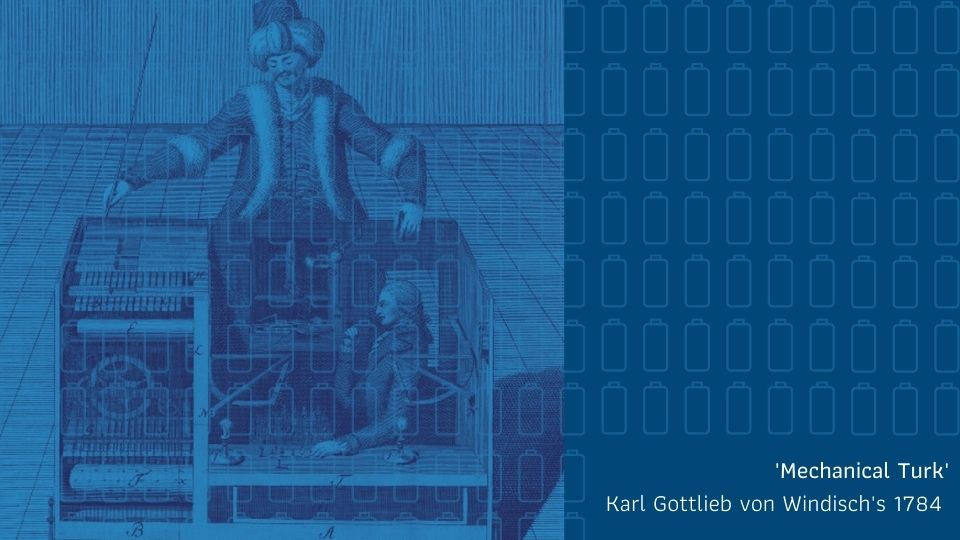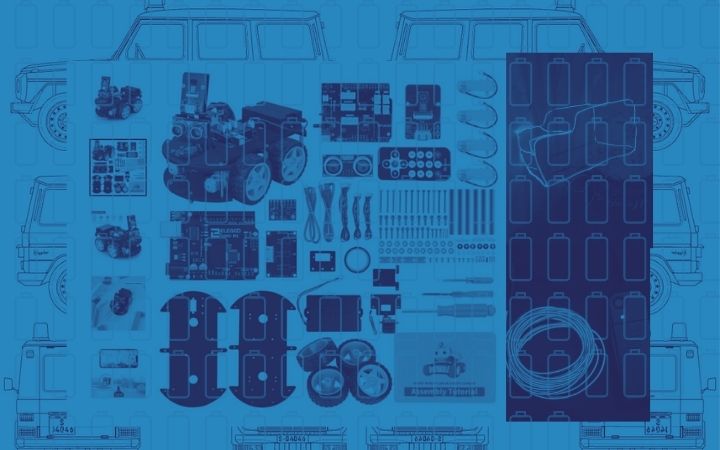Cobalt Blues
An interactive toy car sheds light on the ethical quagmire of computational technology. The work drives from child-miners of cobalt, through invisible factory, warehouse and delivery workers, to arrive at surveillance capitalism, as it intersects with our response to the climate crisis.
produced by: Bokani Tshidzu
Concept / Visual
This work explores the moral dilemmas within human and environmental ecologies, which are often hidden in seductively convenient, entertaining and ubiquitous technology.
Toy wire cars, often made from old clothes hangers and chicken wire, are the ways poorer children in many parts of Africa, (including Zimbabwe where the artist grew up) manifested their dreams of owning fast cars. Electric vehicles, which are being recommended as climate solutions, require minerals mined by children and which leave polluted water supplies. The burden of the solution rests on those that contributed the least to the climate crisis.
The work uses a mechanical turk device (a hidden person operating an ‘intelligent’ machine) to drive the car which. The car’s just-about visible camera reminds us of the Google Street view car, collecting data without permission as it moves around. The wire-frame literally exposes the technology and materials used to the viewer. Gone is the polished, slick design which hides the hands of the many people who make our experience of technology frictionless. The visible circuits, wires and battery pack are a clear reminder that the car is not moving by magic.
The projected video feed puts the viewer in the frame, reminding us of our complicity in an extractive system as we’re invited to respond to some of these issues by the text generated. The challenge is to find our way past surveillance capitalism.
The reflective pool and fragrance ribbon, is designed to subliminally draw in the viewer like Narcissus. The polluted water on which the glass floats is to draw the connection between the waste products of mining and the ways in which we dispose of our devices.
The work draws on the seminal research by Kate Crawford and Vladan Joler’s, Anatomy of an AI System (2018), which talks about the hidden ways in which technology requires many millions of exploited workers. They say; ‘There are deep interconnections between the literal hollowing out of the materials of the earth and biosphere, and the data capture and monetization of human practices of communication and sociality in AI. Mezzadra and Nielson note that labor is central to this extractive relationship, which has repeated throughout history: from the way European imperialism used slave labor, to the forced work crews on rubber plantations in Malaya, to the Indigenous people of Bolivia being driven to extract the silver that was used in the first global currency. Thinking about extraction requires thinking about labor, resources, and data together.’ These are themes reflected in ‘The Age of Surveillance Capitalism’.
This work mostly focuses on the rare metals used in technology but hints at the surveillance aspect with the use of the camera feed with a distorted feed.
Aesthetically Julian Oliver’s work strongly influenced the work, as well as the exhibitions; Artists and Robots (Grand Palais, Paris, 2018) and Disobedient Objects (V&A, London, 2018) which both spoke to political activism, technology and art.
Technical / Self-evaluation
Hardware:
A computer with CUDA enabled (NVIDIA) GPU. Tested on Windows.
Projector: BenQ W1210ST projector
The wire car is made with galvinised wires and the electroluminescent wire attached onto the structure using a thinner wire. This neon-effect wire is powered by AA batteries. The Elegoo smart robot car kit was the best arduino bot for this project with it’s wifi-enabled camera and alternative sensors.
Elegoo Smart Robot Car Kit V4.0:
- Elegoo Arduino Uno R3
- ESP32-WROVER Camera module
- Top and bottom Base Plates
- DC Motors (4)
- Custom Arduino Shield
- L298N Motor Controllers
- SG90 Servo Motors
- HCSR04 Ultrasonic Distance Sensor
- Infrared Remote Control
- Servo & Ultrasonic Sensor mounting brackets
Software:
The code is written in Processing v3.5.4. The video feed from the Arduino Uno and ESP32-Wrover camera is pulled in via a wifi connection and then distorted using Golan Levin’s frame differencing. I wanted to give the impression that there was some anonymity in the video feed.
Given the dark display area, (to facilitate the projection), frame differencing, which relies on movement was the best tool to make use of the input and draw a video stream.
Text is generated from a file, converted from my notes while reading on this topic.
The text is loaded at an average reading rate, controlled by frame. Loading one word at a time, ensures the viewer takes a more meditative pace to read and allows for a continuous stream so a viewer can always gain something from the text, even if they missed the start.
Self evaluation
Overall, the project raised awareness of mining practises amongst technology users, artists and developers. The experience raised enough questions to engage the audience and encourage them to research more of the issues raised by the work.
There were several iterations of the project, starting with a video game, but ultimately, this was the best vehicle to both attract viewers as well as communicate some of the important issues. The experience was coherent and the wire car afforded many ways in for the viewer, from being able to see the machine at work and noticing their distorted image in the frame to holding their interest as they played with the remote control.
I was unable to send information to the Arduino and so could not programme it to react to viewers the way that I would have preferred. This became a feature not a bug as operating the car either via the app or infra-red remote opened up the ‘Mechanical turk’ discussion, adding a new layer to the experience.
Future development
The work could be expanded by having some cars which are manually operated and others which follow viewers around as they move around a gallery space. It would be even better if each video feed could be projected onto a bigger wall with each car (neon colour matching the frame-differencing drawing) drawing a different image. The car kit comes with barrier sensors which could be programmed to react to collisions.
Since finishing the project, I have become aware of other projects which automatically email political and business leaders after the viewer has completed the experience. I think this would better serve the campaigning application of this artwork.
I also wanted to generate the text based on the movement of the viewer in front of the car. This did not happen in the end as I could not get the feed from the Arduino to work in the code, so in the end I left this out.
Aesthetically and experientially, I was pleased with the project. That being said, I think I focussed too much on the output aspects of the work and could have done something more nuanced with the inputs.
References
- Annie Kelly, Apple and Google named in US lawsuit over Congolese child cobalt mining deaths- The Guardian 16 Dec 2019 https://www.theguardian.com/global-development/2019/dec/16/apple-and-google-named-in-us-lawsuit-over-congolese-child-cobalt-mining-deaths
- Kate Crawford and Vladan Joler, Anatomy of an AI System, 2018. https://anatomyof.ai/
- David S. Abraham, The Elements of Power: Gadgets, Guns, and the Struggle for a Sustainable Future in the Rare Metal Age, Reprint edition (Yale University Press, 2017), 89
- London Mining Network and War on Want, Post Extractivist Transition Report, 2019 https://londonminingnetwork.org/wp-content/uploads/2019/09/Post-Extractivist-Transition-report-2MB.pdf
- Pope Francis, Laudato si', 2015
- Shoshana Zuboff, Karin Schwandt, The age of surveillance capitalism: the fight for a human future at the new frontier of power, 2019
- Wolfgang Sachs and Tilman Santarius, Fair Future: Resource Conflicts, Security, and Global Justice, 2007
- Zoë Schlanger, “If Shipping Were a Country, It Would Be the Sixth-Biggest Greenhouse Gas Emitter,” Quartz, April 17, 2018.
Code references:
- Ambulance game: https://editor.p5js.org/ahmednawaznoon/sketches/ucIeckkPF
- Text strings to use: https://forum.openframeworks.cc/t/how-to-write-hello-world-in-of-newbie/15426/6
- Interfacing with Arduino: https://www.youtube.com/watch?v=iClda3M4aPw&ab_channel=danbuzzo
- Golan Levin, Frame differencing: https://github.com/processing/processing-video/blob/master/examples/Capture/FrameDifferencing/FrameDifferencing.pde








































































